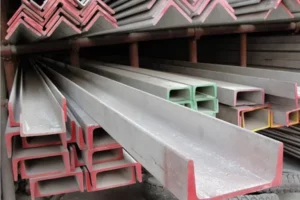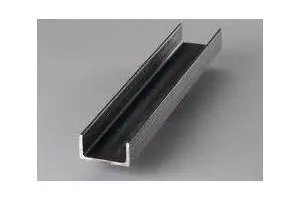Stainless Steel Channel
Short Description:
A stainless steel channel is a groove-shaped section of long steel, the same as the I beam. Ordinary channel steel is mainly used in building structures and vehicle manufacturing.
Stainless Steel Channel Details:
Size :
5# – 40#, 40 x 20 – 200 x 100
Standard:
GB1220, ASTM A 484/484M, EN 10060/ DIN 1013 ASTM A276, EN 10278, DIN 671
Grade:
201,304,316, 316L,310s,430,409
Finish:
Black,NO.1,mill finish, cold draw
Features and Advantages:
It has excellent corrosion resistance and long service life, which is determined by the material itself. In addition, it also has strong heat resistance and wear resistance, as well as good mechanical properties and processability. At the same time, the surface of the stainless steel channel is very smooth, which can reduce processing costs and improve production efficiency.
Processing Technology:
Stainless steel channel is a common metal product that is widely used in construction, shipbuilding, machinery manufacturing and other industries. In its processing, a number of technological steps are required, including material preparation, cutting, forming, welding, surface treatment, etc. The following will introduce the processing technology of steel channel in detail.
Next is the cutting process. Cutting is the first step in the processing of stainless steel channels. Common cutting methods include wire cutting, flame cutting, plasma cutting, etc. Depending on the processing requirements and equipment conditions, select the appropriate cutting method for operation. The steel channels after cutting need to be cleaned and trimmed to ensure their size and surface quality.
Then comes the forming process. The forming of channels can be carried out by cold bending, hot bending, rolling, etc. Among them, cold bending is a commonly used forming method, which uses a dedicated pipe bender or plate bender to bend the cut stainless steel channels. In the forming process, it is necessary to pay attention to controlling the bending angle and radius to ensure the quality of the finished product.
Next is the welding process. Welding is an important part of the processing, including methods such as fluorine arc welding and electric arc welding. Before welding, preparation work such as cleaning the welding surface and adjusting the welding process parameters needs to be carried out. During the welding process, it is necessary to protect the welding area from oxidation and pollution to ensure the quality of the welding seam. After welding, the welding seam also needs to be polished and processed to improve the strength and appearance of the welding joint.
Finally, there is the surface treatment process. There are various methods of surface treatment for steel channel, such as mechanical polishing, chemical polishing, sandblasting, etc. Surface treatment can improve the smoothness and corrosion resistance of stainless steel channel, making it more in line with use requirements and aesthetic needs. When conducting surface treatment, it is necessary to select appropriate methods and process parameters to ensure processing effects and process safety.
The processing technology of stainless steel channel includes material preparation, cutting, forming, welding, and surface treatment steps. In each process step, it is necessary to strictly control process parameters and operating requirements to ensure processing quality and product performance. Through reasonable processing technology, high-quality and safe stainless steel channel products can be produced to meet the needs of various industries.
Why Choose Sino Stainless Steel?
As a leading supplier of stainless steel channels across the world, Sino Stainless Steel provides customers with high-quality stainless steel channels at a very competitive price.


Previous: Stainless Steel Angle
Next: stainless steel Hexagonal
Channel Bar Sizes
Stainless Steel Channel Bar
 :+86-13012867759
:+86-13012867759  :export86@sino-stainless-steel.com
:export86@sino-stainless-steel.com